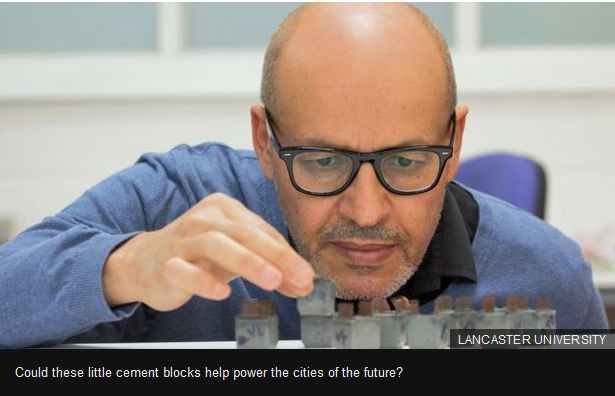Innovative concrete
The challenges that face our built environment seem to be increasing, as are the demands we make of our buildings and infrastructure. We need robustness and solidity to feel safe and secure, we must build-in resilience to climate change and be able to deal with overheating, flooding, storms… all in an increasingly urban environment where high-density housing can exacerbate some of these issues. We must ensure solutions are low carbon, material efficient and without compromising quality and performance standards, such as fire safety and non-combustibility.
Find out how concrete is evolving and innovating to deliver a sustainable built environment now and for future generations.
Listed below are some of the amazing innovations that we have our eye on...
Bio Receptive Concrete

Living Concrete
Our recent Concrete Futures exhibition featured examples of new and experimental forms of the material, including “living concrete”, developed by the Bartlett School of Architecture. Described as an “architectural bark”, it can host species such as algaes, mosses and lichens to create more sustainable green walls that require no maintenance and potentially absorb pollution and noise in cities. In 2018, eight prototype panels were installed at St Anne’s RC Primary School in London.
Read more
________________________________________________
Digital Fabrication
DFAB House: the world’s first full-scale architectural project to use 3D sand printed formwork
Researchers at ETH Zurich have fabricated an 80 m² lightweight concrete slab at the DFAB House, making it the world’s first full-scale architectural project to use 3D sand printing for its formwork.
Read more
________________________________________________
Insulating Concrete
Thermal insulating lightweight concrete with Poraver® as lightweight aggregate to improve the final product properties
Poraver® expanded glass is a lightweight aggregate according to DIN EN 13055-1 and ideal for the production of lightweight concrete (LWC). The structural and thermal insulation properties of Poraver® enable a wide range of concretes for different applications.
Read more
________________________________________________
Potassium-geopolymetric (KGP) Composites

How the humble lamp-post could help power our cities
One day, your office windows will be harvesting energy from the sun, while the lamp-post down in the street is storing energy in its concrete.
Vertical wind turbines will spin as traffic whooshes past, and pavements and roads will generate small amounts of energy from all those commuter feet and heavy buses and lorries pounding down them.a
Read more
________________________________________________
Graphene
Graphene 'a game-changer' in making building with concrete greener
Graphene has been incorporated into traditional concrete production by scientists at the University of Exeter, developing a composite material which is more than twice as strong and four times more water-resistant than existing concretes.
Read more
________________________________________________
Carrots in Concrete
Carrots Can Help Make Concrete Stronger and Greener
Researchers from Britain's Lancaster University have been using a food blender to mix the root vegetable particles, or nano platelets, of carrots with concrete, in an effort to produce a stronger and environmentally-friendly product. According to lead researcher Mohamed Saafi the strength of concrete increased by 80% when adding their new material mix.
Read more
________________________________________________
Dynamic Formwork/Knitted Formwork
Zaha Hadid Architects and ETH Zurich debut concrete pavilion with 3D-knitted formwork
The pavilion named KnitCandela, was built using KnitCrete – a new 3D-knitted textile technology for creating curving concrete structures, without the need for expensive and time-consuming moulds.aZaha Hadid Architects and ETH Zurich debut concrete pavilion with 3D-knitted formwork
Read more
________________________________________________
Self-healing Concrete
Cambridge researchers developing self-healing concrete
Researchers from the University of Cambridge are using microencapsulation technologies developed by Dolomite Microfluidics to create self-healing construction materials. The Geotechnical and Environmental Research Group are developing microcapsules containing ‘healing’ agents – such as exoxy or polyurethane – which can be added to building materials to allow self-repair of small cracks which develop over time.
Read more
________________________________________________
SIG Performance Technology Brings InnoGain to UK & Ireland
Revolutionise Hole Making in Concrete
SIG Performance Technology has signed an exclusive agreement to bring to market the revolutionary InnoGain – a new range of patented products which provides a cost effective, efficient and sustainable alternative to making through and anchor holes in concrete – and fundamentally removes the need for drilling on-site.
Read more